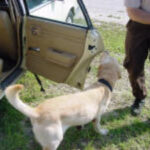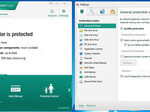When you hear someone mention the phrase computer virus, there are many different types of malware, malicious codes, and programs they could be talking about. Lets first explore just exactly what the phrase computer virus could mean and delve a bit into the history of viruses. You will get a much more solid foundation on understanding computer viruses this way.
The phrase computer virus is commonly used to describe a program or piece of malicious code that attaches itself to another file or program on your computer without your knowledge or consent. It could attach to anything from an email to your word processing program. There are two problems with this. First off it does this without your permission, and secondly it has a purpose that will cause some sort of harm or damage. This could include destruction of your files to crashing your entire system. Some of these malicious programs are even designed to steal your passwords and financial records. It will also try to replicate itself and spread to other computers by using your system.
Computer viruses date back to the early 1970’s when the creeper virus was created. It was designed to display the comment “I am the creeper, catch me if you can!” and then spread itself to other computers on the network. This was followed by several other viruses, but traditional computer viruses did not emerge until the 1980’s.
A true computer virus attaches itself to an executable file or program, and then becomes active when the program is run. It then spreads itself to other programs and files on the infected computer. It can rapidly take over the entire system on a compromised machine in this manner.
Worms are another type of malicious code that are sometimes referred to as simply a computer virus. They behave a bit differently than an actual virus does. They run independently and do not require an executable program to run and replicate themselves. A worm is designed to scan a computer looking for a specific security weakness and then infect the system that contains it. Then it will begin to look for other computers with the same security weakness to infect. In this way they can rapidly infect an entire computer network causing a serious security breach. Worms are designed to do many things including stealing all the email addresses in your address book and even taking complete control of infected computers.
You might also hear trojan horses called computer viruses, however they are a different type of threat as well. The reason they are called trojan horses is because like the trojan horse in Greek mythology, they seem to be useful. In this case they pretend to be a useful program when in reality it is really a dangerous and destructive program. This sort of malicious program is designed to steal passwords and other personal information stored on an infected machine. They pose a very real and serious threat of identity theft and should not be taken lightly. A trojan horse is typically installed on an infected machine by downloading a program that pretends to be something useful or fun like a free game. Then when the program is run the trojan takes over and begins to do its dirty work.
In order to prevent your system from becoming infected with these very dangerous files and programs it is important to take protective measures. There are several things you can do to prevent infection, and if infection should occur, remove the threatening program or virus from your system. Always scan email attachments with a virus scan program before you open them, and it is also a good idea to not open attachments from people that you don’t know. You should also always turn on your computer’s firewall, keep your system up to date, and update your anti-virus software often. Armed with a basic knowledge of what computer viruses are and the dangers they pose, you are better prepared to protect your computer system and your important files, passwords, and data from damage and theft.
Sources:
Wikipedia





